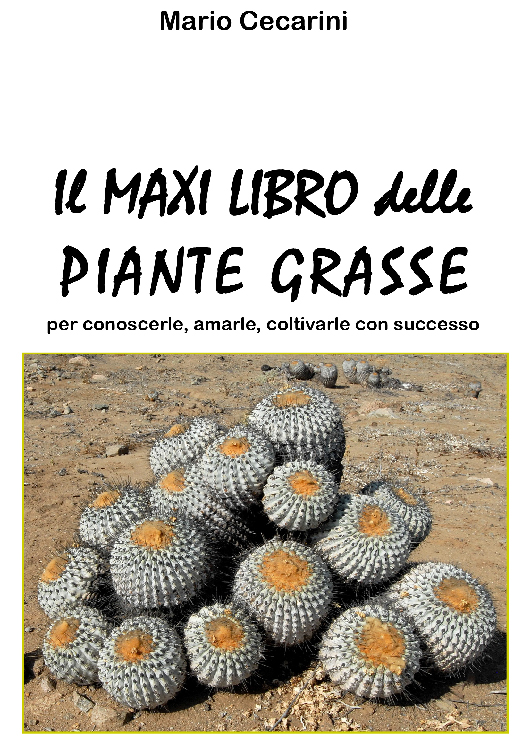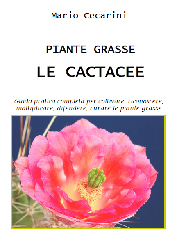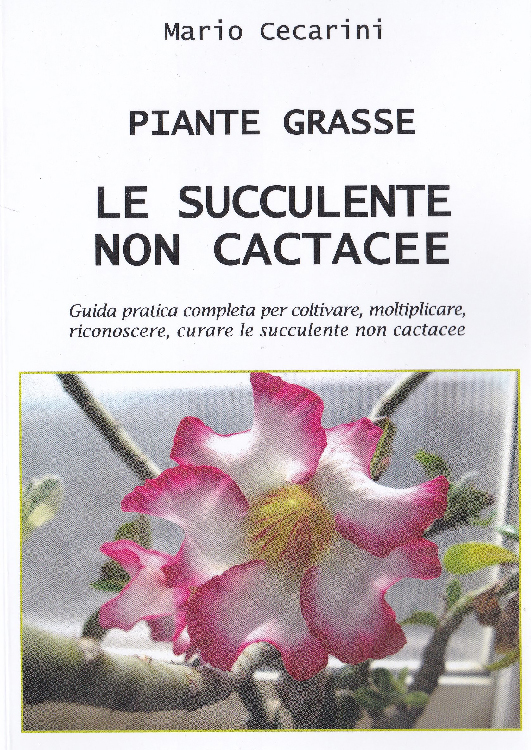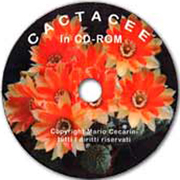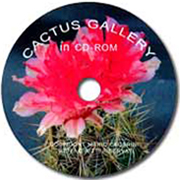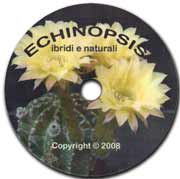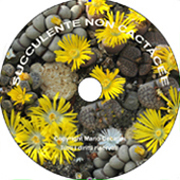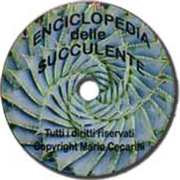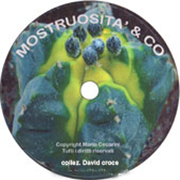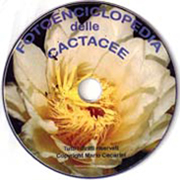|
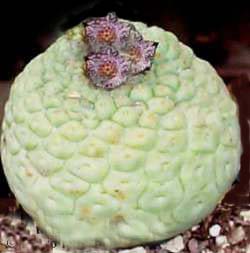 Succulents are plants that have adapted to low rain-fall climates, usually deserts or semi-deserts, developing the ability to store water in specialised organs, whether these be stems, branches, leaves or roots. This enables them to survive for long periods with very little moisture and in some cases with none at all. The word “succulent” is derived from the latin “succus” (juice) since the stored water often gives these plants a swollen and fleshy appearance; this condition is also known as succulence. A distinction is often made between two main groups: cactuses and non-cactus succulents, the first including all plants of the cactaceae family, the latter all the other families. Succulents are plants that have adapted to low rain-fall climates, usually deserts or semi-deserts, developing the ability to store water in specialised organs, whether these be stems, branches, leaves or roots. This enables them to survive for long periods with very little moisture and in some cases with none at all. The word “succulent” is derived from the latin “succus” (juice) since the stored water often gives these plants a swollen and fleshy appearance; this condition is also known as succulence. A distinction is often made between two main groups: cactuses and non-cactus succulents, the first including all plants of the cactaceae family, the latter all the other families.
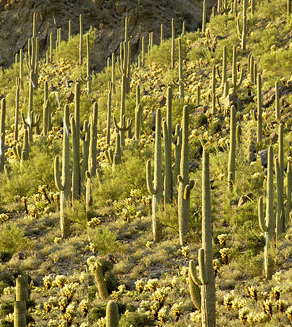 Some succulent plants are often erroneously referred to as cactuses even if they are not; this is usually the case with a few species of columnar Euphorbia bearing numerous tubular branches. If you are not able to distinguish between the two just make a small cut in the stem: if the sap oozing out of the wound is milky white and sticky (latex), then, beyond all doubt, it belongs to the Euphorbiaceae family. Some succulent plants are often erroneously referred to as cactuses even if they are not; this is usually the case with a few species of columnar Euphorbia bearing numerous tubular branches. If you are not able to distinguish between the two just make a small cut in the stem: if the sap oozing out of the wound is milky white and sticky (latex), then, beyond all doubt, it belongs to the Euphorbiaceae family.
Succulents bearing fleshy leaves, a very diverse group of plants, are typical of regions in which droughts are less prolonged and severe than they are in deserts; here plants can still manage to retain leaves, which are also used as water-storage organs, although they might be shed if the drought lasts too long.
Anyway, most of the plants belonging to the Cactaceae family have a fleshy stem that carries out photosynthesis while their leaves have turned into spines in order to reduce water loss through evaporation. The stems are mainly globular or columnar and their characteristic green colour reveals the presence of chlorophyll.
Caudiciforms are plants with a swollen stem base (caudex). This storage organ may develop above or just below the ground.
Some species growing in deserts store water and food in their roots which have a tuber-like fibrous appearance and while they spread out they remain just beneath the soil surface so that they can absorb what little moisture a night dew or a light shower may bring. During the dry periods the aerial part often dies and the plant becomes dormant; only when water becomes available again will the plant spring back to life.
The definition CACTACEAE refers to a family of xerophyte plants (adapted to arid conditions) which includes approximately a hundred genera and two thousand species, mostly characterised by a succulent stem, globular, columnar or cespitose in shape, with pads (flattened stems that act as leaves), cernuous, prostrate, leafy, articulate in growth habit, ribbed, tuberculate, smooth or spiny, with a stellate, circular or oval cross-section. With regard to dimensions, these can vary considerably from specimens an inch or so in width and height to those more than 30 feet tall and 3 in diameter. The epidermis of the stem is covered with a waxy layer whose main function is to reduce water loss. Spines, which are basically modified leaves, are extremely variable in shape, thickness, length, consistency, texture, number, colour, section and disposition. They have a superficial structure, not deeply connected to the underlying tissues, very similar to that of rose prickles.
What all members of the CACTUS family have in common is the presence of the areole, some kind of hairy tuft, growing at the nodes of the stem, from which spines arise. These can be flexible and hair-like or bristle-like to rigid and needle-like or nail-like. Ribbed cacti bear areoles along their ribs, those with leaves at the leaf axil and the ones with tubercles on top of these outgrowths. From the areole also branches and flowers may arise, and this can occur near the apex or far from it. Several genera, once attained maturity, produce a cephalium (flowering structure with copious development of hairs and/or bristles) that is either apical or lateral (pseudocephalium).
Cacti’s leaves are persistent only in the Pereskioideae subfamily whose members are actually more like a transition form toward succulents than real ones. In Opuntioideae, leaves can be either very small and caducous (falling off early) or quite large and persistent. A common feature in the Opuntiae genus are glochids: tiny spines that detach easily from the plant and are difficult to remove once lodged in the skin. Roots can be diffuse and shallow (fibrous root system) or sparsely branched and deep (tap root system).
Flowers, mostly with radial symmetry (any imaginary line drawn across the centre of the flower divides it in two identical parts), can be solitary or arranged in a ring around the crown and vary significantly in dimensions; usually there’s no clear distinction between calyx and corolla. Generally they last just for a few hours although there are exceptions. Flowering occurs mostly during the spring though it’s not unusual for many to flower during the summer or autumn and even winter. Flowers originate from a modified vegetative shoot and even if bisexual they seldom allow self-pollination (self-incompatibility).
The fruit, the result of the transformation of both receptacle and pericarpel, is in most cases a berry, either dry or fleshy, usually indehiscent (not opening at maturity) which bears a fair amount of seeds of variable size.
CACTI are typical of the Americas and their distribution area stretches from Canada to Patagonia, the highest concentration occurring in steppes, prairies and semi-deserts, but they can occupy many different habitats, from the great heights of the Andes, to the wet tropical forests in the case of the epiphytes.(see Epiphytic cacti). Click here to find more about the habitats.
For more detailed information about these extraordinary plants go to the pages: The cactus family, Epiphyic cacti, Succulent families, The life of plants, Cultivation guide, Wintertime. |



 Succulents
Succulents



 Succulents are plants that have adapted to low rain-fall climates, usually deserts or semi-deserts, developing the ability to store water in specialised organs, whether these be stems, branches, leaves or roots. This enables them to survive for long periods with very little moisture and in some cases with none at all. The word “succulent” is derived from the latin “succus” (juice) since the stored water often gives these plants a swollen and fleshy appearance; this condition is also known as succulence. A distinction is often made between two main groups: cactuses and non-cactus succulents, the first including all plants of the cactaceae family, the latter all the other families.
Succulents are plants that have adapted to low rain-fall climates, usually deserts or semi-deserts, developing the ability to store water in specialised organs, whether these be stems, branches, leaves or roots. This enables them to survive for long periods with very little moisture and in some cases with none at all. The word “succulent” is derived from the latin “succus” (juice) since the stored water often gives these plants a swollen and fleshy appearance; this condition is also known as succulence. A distinction is often made between two main groups: cactuses and non-cactus succulents, the first including all plants of the cactaceae family, the latter all the other families. Some succulent plants are often erroneously referred to as cactuses even if they are not; this is usually the case with a few species of columnar Euphorbia bearing numerous tubular branches. If you are not able to distinguish between the two just make a small cut in the stem: if the sap oozing out of the wound is milky white and sticky (latex), then, beyond all doubt, it belongs to the Euphorbiaceae family.
Some succulent plants are often erroneously referred to as cactuses even if they are not; this is usually the case with a few species of columnar Euphorbia bearing numerous tubular branches. If you are not able to distinguish between the two just make a small cut in the stem: if the sap oozing out of the wound is milky white and sticky (latex), then, beyond all doubt, it belongs to the Euphorbiaceae family.